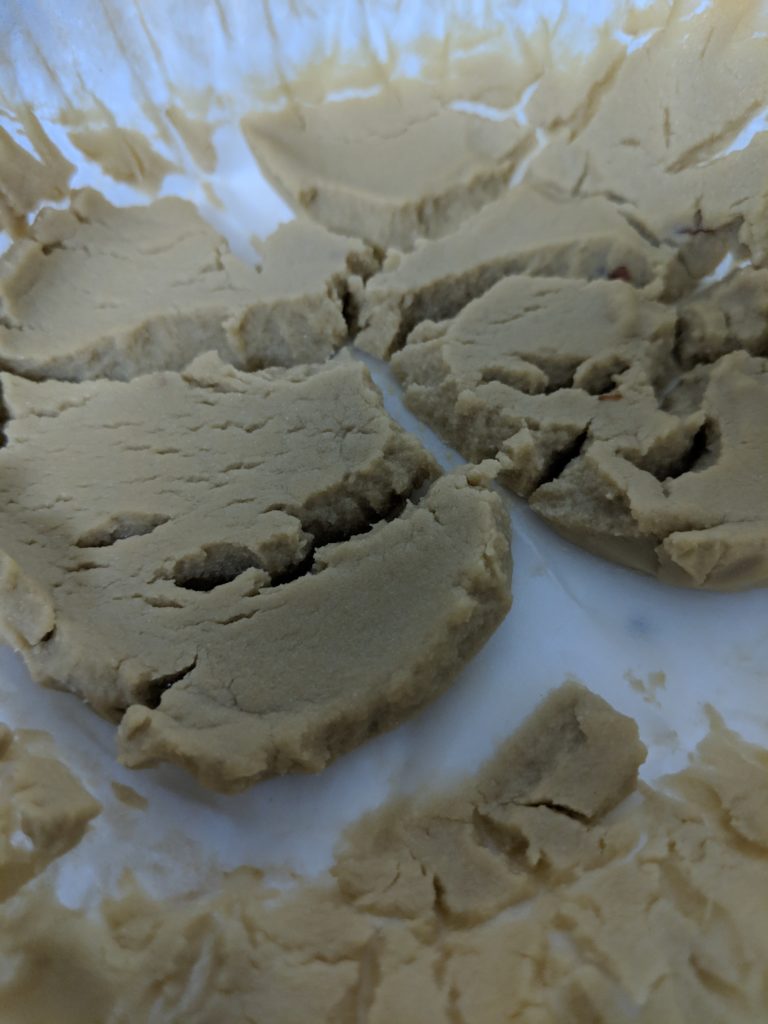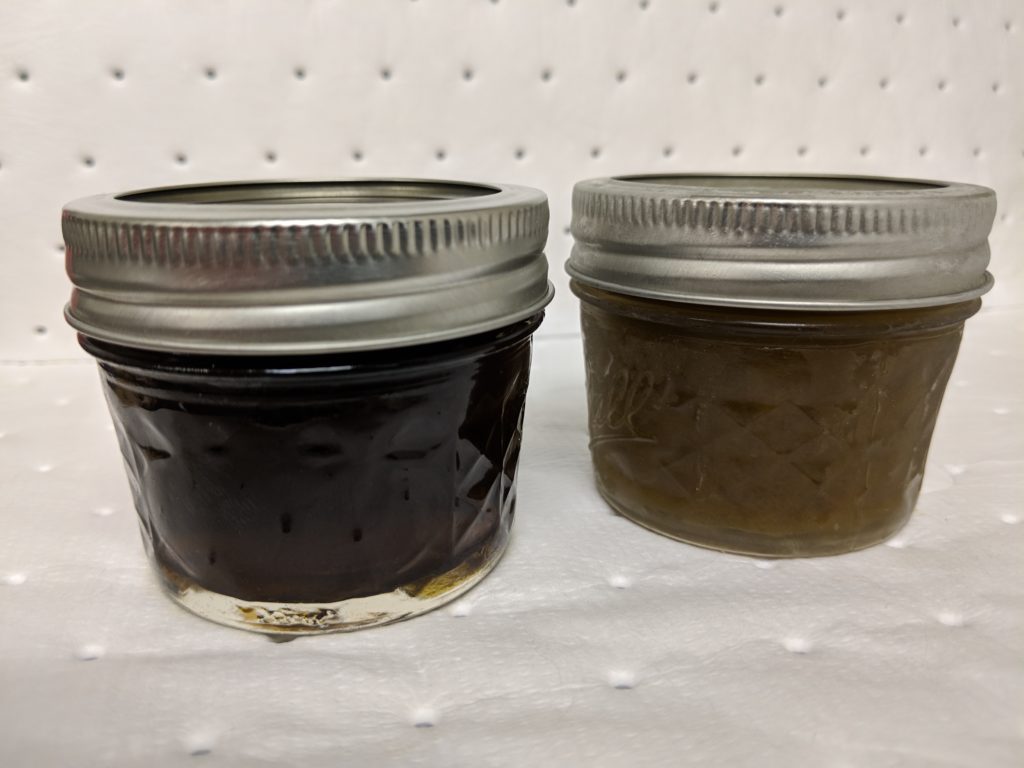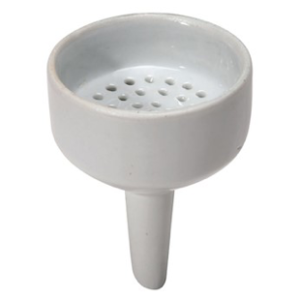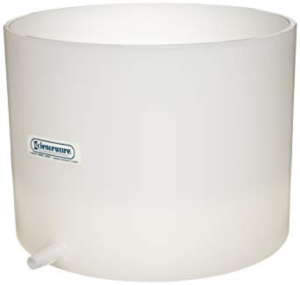Why Winterize?
Proper winterization is an important step in creating a high purity extract.
Winterization is the removal of lipids from crude extract. Lipids are fatty acids that are also extracted from the plant. It is typically the next step after extraction.
Why winterize to remove lipids?
- Fats dilute the cannabinoid fraction, lowering the purity
- Fats can cause distillate to be less transparent hurting its value.
- In vape pens, they can burn on the coil and cause the pen to taste burnt.
The amount of fats picked up in the oil during extraction vary according to the extraction method used.

How Extraction Impacts Winterization
Cold ethanol is the best extraction method for minimizing fats in extract. The colder the ethanol, the less fat will be pulled from the plant.
BHO extraction picks up a moderate amount of fats. Think of the cloudiness that can be seen in shatter or a similar product.
CO2 extraction is known for pulling the most fats out of the plant.
Even between those three methods, variation of the extraction parameters has a strong influence on the amount of plant fats picked up.

General Winterization Techniques
- Using 10 Liters of ethanol for every Liter of crude extract
- 190 proof ethanol is actually preferred to pure ethanol. While also being cheaper, 95% ethanol has 5% water making it ever so slightly more polar. This is beneficial for winterization because the cannabinoids remain soluble even at cold temperatures whereas the waxes are insoluble and crash out of solution.
- Get as close to -80 C as possible. Above -20 C, winterization will do very little. People use chillers, walk in freezers, chest freezers, dry ice, etc.
- 24 hours or more is a normal time to wait for waxes to precipitate out. Shorter times can be used, but it is not as thorough.
- To see if any waxes remain in the filtered solution, you should place a small sample (several mL) back in the freezer for a day or so. If the solution appears cloudy when you check back up on it, further winterization may be needed.
Typical Filtration:
- Vacuum/pressure assisted filtration
- Highest surface area filter possible
- If possible, scrape accumulated waxes off the filter (without disturbing it!) because they will lower the flow.
- Use several different filters. For example, start at a higher micron filter, use a medium filter, and then finally task your smallest micron filter with only the finest particles of wax and the least amount of waxes.
- Metal filters can be expensive compared to paper filters, but they are reusable and they can’t rip.

Don’t!

Do!
If you are using filter papers:
- That there are NO gaps between the edge of the paper and the filter
- Cover all holes completely
- Consider using either a gasket and clamp to hold the filter in place or use a filter bed. Both of these things will prevent the filter from shifting, prevent solution from going around the edge, and allow you to scrape waxes off the filter to improve time efficiency.
The fats removed by winterization will add up to several percent of crude extract.
Ethanol used for extraction and winterization is an excellent candidate to be recycled for reuse with a B/R distillation system.
February 12, 2019 at 8:01 pm
Hello!
I am just curious if the waxes and lipids filtered out could be used for something else, such as a salve or lotion?
Thank you
March 3, 2019 at 6:08 pm
Hi,
I have heard that before. I don’t know how the process works though. You may want to rinse the filtered fats and waxes first. Maybe I’m wrong and the other compounds present could be beneficial.
March 31, 2019 at 4:50 pm
Very good! I love eatting crude and it’s been very helpful with pain and sleep
August 22, 2019 at 6:06 pm
I have been playing around with that and it can be done. You just have to practice
April 19, 2020 at 8:58 pm
Ski wax!
January 3, 2022 at 4:36 pm
yes
April 12, 2019 at 8:26 am
Could ypu make candles out of the waxes? Lol
May 17, 2019 at 4:36 pm
If you get creative enough!
October 13, 2021 at 12:30 pm
Good idea !
May 13, 2019 at 5:49 pm
What micron size for ea filtration
May 17, 2019 at 4:48 pm
Hello,
I would recommend starting at ~20 micron to remove the bulkier waxes and then moving down to as low as possible. Maybe 20, 10, 5 micron for example. If you choose to go to the smallest micron immediately, your flow rates will suffer greatly as the larger waxes will clog the pores of the filter very quickly.
Luke
October 5, 2019 at 5:04 am
Buen día, ofrecen capacitación, soy de Mexico, estudiante de la UNAM
May 21, 2019 at 10:36 am
Luke,
Have you actually developed a working process with the exact equipment needed to winterize CBD? Reason I’m asking is I have a licensed lab and we are getting in CBD for drug applications. I thought it would be a great idea to winterize this that we have and produce enough pure, safe oil for vaping pens. I could use the collaboration, thanks.
May 22, 2019 at 12:16 pm
Hey Mark,
For general questions about our equipment you can reach us at contactus@brinstrument.com and in regards to your actual question it may be easier to contact me directly at luke.vantrieste@brinstrument.com. Thanks!
Luke
November 6, 2019 at 5:21 pm
i could help with this
November 19, 2019 at 12:16 am
Micheal, are you still available to help with winterization? We are in Eugene, Oregon and I need some crude winterized.
June 5, 2019 at 7:39 am
Question I’ve been winterizing oils for years and never have I came across when in the process the whole liquid looks like caramel colored solution like it normally does, but there has been no separation and its now going on 40hrs. I’m going to separate the crude and do a chromatography test to see what I am dealing with because normally within a few hours you start to see some type of separation, Also The oils I’m winterizing has come from a third party in which I polish up products for folks and purge into shatter. Has any body out there experienced this before? belials420inkshop@yahoo.com
June 16, 2019 at 8:08 pm
Hi there,
Why do you not recommend to use a Buechner funnel for removal of waxes?
Thanks
June 16, 2019 at 8:29 pm
Hey,
Surface area is king. The design is OK, but the size is not. The traditional porcelain funnels are much too small for any operation beyond the benchtop scale. Surface area increases with r^2 so small changes in radius can have significant effects. Also consider that once the waxes begin to accumulate on the filter, filtration rates suffer dramatically.
February 16, 2020 at 12:09 am
Buchner is more than fine so long as you are not running large quantities.
February 21, 2020 at 4:18 pm
A buchner funnel setup off the shelf won’t be insulated so your filter will warm the solution being filtered. In my opinion, most bad winterizations are caused by letting the solution warm up before it passed the filter. It doesn’t matter for how long or how cold you winterized it if the lipids are allowed to redissolve. Added to this that they are slow, i.e. more time on the non-insulated filter.
If you want to make more than a couple liters a day of distillate, you will need an army of Buchners or just a larger surface area.
August 13, 2019 at 10:16 am
2 question:
1. Could I just put the winterized oil in a bottle, and let it sit over a filter overnight? Or will the fats absorb back into the solution if it warms up too much?
2. I make RSO for my sister with rhumatoid arthritis. How I do it is I chop up some weed to rice-grain fineness, put it in a cooking oil filter bag, decarb it at between 110-120 degrees Celsius for 40 mins, then put it in the extractor, still in the bag. I’m using homebrew 97% ethanol (lab tested, no methanol present) with a soxhlet extractor set to heat up to between 90-95 degrees Celsius, (but I’ve seen it go up to 102 on the first few heat cycles. It’s just an electric hotplate controlled by an arduino) and I leave it running until the ethanol runs clear, after about a day or two depending on the weather. So far I haven’t had a batch that gets me high, but the extract shows 20% THC-A and 10% CBD on lab test results that some dude did for me. Typically use cheese. What am I doing wrong?
August 14, 2019 at 10:09 am
1. The fats will absolutely dissolve back into the ethanol. I cannot stress this enough, you must prevent the solution from warming as much as possible while you filter it. I have seen people do their filtration inside their freezer. You can also use a jacketed vessel. I also recommend covering with a lid in order to keep it cold, keep moisture out, and keep ethanol vapors out of your lab. If the solution warms past a certain point you have essentially wasted your day regardless of how small a micron filter you use.
2. I don’t know much about edibles and I think I would need some more information.
Extracting with ethanol, especially warm ethanol, should be short. I recommend looking into QWET (quick wash ethanol) extraction.
August 22, 2019 at 6:04 pm
You could try DECARBOXYLATION to solve the high issue. I have had very good luck with that process. Baking and such doesn’t normally allow for proper decarboxilation. Just remember to keep it covered as it cools, always use a glass dish for decarb and not longer than 20 minutes at 200degrees
January 18, 2021 at 6:39 pm
You are right, I w
oul
d
You are correct, I would rather suggest to decarb the extracts for 5 minutes at 200degrees to avoid formation of CBN
May 22, 2021 at 10:53 pm
You will not decarb anything at 200 degrees F. CBG decarbs at 215 and THC around 240. Should run it for an hour to allow max decarb.
July 28, 2021 at 1:14 pm
Please see this paper:
Zaharia et al., 2020, “Influence of Temperature and Heating Time on the Decarboxylation of Delta-9 THC and CBDA in the Cannabis Inflorescences”. U.P.B. Sci. Bull, Series B, V 82, No. 3.
They successfully decarbed THCA at 75C, although it took 10 hours.
Keeping the temperature as low as possible is likely to preserve more of the terpenes.
July 20, 2022 at 7:44 pm
Brilliant
November 20, 2019 at 5:57 am
Dear Sirs I would love to learn from all of you, I recently bought a distillation equipment I am taking the first steps, I would like to produce THC and CBD for vape, could someone point me to a book about this work, which I can buy to have but knowledge, please ask the collaboration of all, any book that I can buy from now I’m very happy to be sharing this moment My name Ray
November 20, 2019 at 9:25 pm
[…] or carbon dioxide (CO2) extraction method. The next step is a post-production process called winterizing, in order to remove lipids from cannabis oil, increases purity, improve oil color, and enhance […]
November 23, 2019 at 5:52 pm
[…] or carbon dioxide (CO2) extraction method. The next step is a post-production process called winterizing, in order to remove lipids from cannabis oil, increases purity, improve oil color, and enhance […]
December 12, 2019 at 9:11 pm
I know im about a year late on this topic, i have had very good luck winterizing using 2 very common technics used in various forms of alcohol manufacturing that have both given my clarity and a higher proof during the distillation process. Over the past year we tried some of the most expensive products our their and we reverted back to true…time and tested ingredients and machines. My advice is search for past proven processes as we are working with an organic material just as in many different alcohol manufacturing.
February 5, 2020 at 11:58 am
i like the page.its gorgeous
February 7, 2020 at 4:13 am
During winterisation of a cannabis/ethanol mixture (1:5) does the lipids and waxes form in the top or bottom of the liquid? or are they floading around in clousters?
February 7, 2020 at 11:48 am
I actually see all of the above. I don’t have a real explanation but three guesses are:
1) Moisture content of the crude/ethanol solution
2) Extraction solvent (supercritical CO2 will dissolve waxes that are insoluble in ethanol, thus more clumpy waxes)
3) Winterization temperature (density of the solution)
February 12, 2020 at 3:50 pm
Can you use heptane to winterize? Or 95% EtOH and 5% heptane vs the 5% being water?
February 21, 2020 at 4:03 pm
In theory you can use a lot of solvents. I think the water helps precipitate out some of the lipids/gums. It really comes down to what the state regulations are.
March 3, 2020 at 9:18 am
[…] the extraction process, the oil is further purified through winterization. This process removes any fats, lipids and waxes and is an important step in creating a high purity […]
March 18, 2020 at 12:45 pm
[…] Winterization is the process used to extract CBD and other cannabinoids from the hemp plant. […]
August 5, 2020 at 7:07 am
Hi.
how to remove dark color.
After removing the chlorophyll, can you start distillation?
Is it possible to do with a rotary evaporator, for example, put the flask in warm water so that the Ethanol evaporates?
August 9, 2020 at 1:20 am
Color is caused by different things and not all methods will remove all colors.
Adsorbents are a very common technique. HOWEVER, proceed with caution when using any sort of additive to your process. You will save time and money purchasing a proper color remediation SOP and the correct filters/equipment. Liquid-liquid extraction is another technique. It is capable of removing color caused by some water soluble compounds such as gums.
Distillation can be done on extracts containing chlorophyll. I have not noticed a huge difference other than extracts containing lots of chlorophyll tends to be lower quality to begin with.
That method could work in theory. More of a hobby solution than production though.
-Luke
September 15, 2020 at 7:02 pm
[…] Winterization forms a crucial part of the process of making CBD oil, because it separates out the lipids present in a raw extract. […]
September 18, 2020 at 3:42 pm
I use a 10:1 ethanol to crude ration and bring it down to -80 C. When I remove it from the freezer to filter out the lipids it is in an unpourable state and I’m forced to mix it to get it out of the stainless steel vessel. Does this mixing process reintroduce the lipids back into the oil?
September 18, 2020 at 5:45 pm
It may, but it could be negligible. The biggest worry is that the solution will warm up before or as it filters which will reintroduce some of the lipids.
Have you tried rewinterizing after filtering the first time to see how much additional precipitation can happen? Sometimes a double freeze/filter can be necessary.
-Luke
September 18, 2020 at 6:18 pm
Thank you, I will give the rewinterizing a try and see what I get.
October 24, 2020 at 3:05 pm
would it be possible to use 95% proof alcohol such as Spirytus Duch Puszczy, i’m struggling to obtain ethanol or everclear…
October 24, 2020 at 10:26 pm
Probably. Most grain alcohols or something similar should be fine. It is mostly the water content that becomes an issue.
You may need to play around with the procedure slightly, but probably not much.
-Luke
February 17, 2021 at 7:49 pm
[…] https://brinstrument.com/blog/cannabis-distillation/winterization-of-cannabis-oil-extracts-to-remove… […]
April 14, 2021 at 2:37 am
[…] isolate only contains CBD. Everything else is removed from the plant extracts in a process called winterization. Winterization is when full spectrum CBD oil is placed into ethanol and frozen. The fatty acids in […]
August 5, 2021 at 11:38 pm
[…] isolate is only CBD. Everything else is removed from the plant extracts using something called winterization. Winterization is when full spectrum CBD oil is mixed with ethanol and frozen. The fatty acids in […]
August 10, 2021 at 9:54 am
Sounds great
August 16, 2021 at 1:58 pm
[…] isolate is only CBD. Everything else is removed from the plant extracts using something called winterization. Winterization is when full spectrum CBD oil is mixed with ethanol and frozen. The fatty acids in […]
November 13, 2021 at 5:06 am
Im going to be doing small runs like 100 grams or so to learn how to run my roto vap. I have some sweetened cbd distillate/crude that still has a fair amount of fats/wax/lipids. How much 190 to distillate should i start with? Would i be wrong to start with 100ml of 190 to 100grm then winterize for 24 to 48 hrs, filter then roto vap, or should i use less alcohol? The rotovap is a 5l but has 500 and 1000ml flasks to do smaller runs.
November 17, 2021 at 6:09 pm
Would like too by more it works for me Back pain fibromyalgia degenerative disk disease helps pain and sleep
March 30, 2022 at 7:08 pm
We are seeing an increase in potency using Acetone as a winterization media over Ethanol. Could you explain further as to why that could be? Thank you.